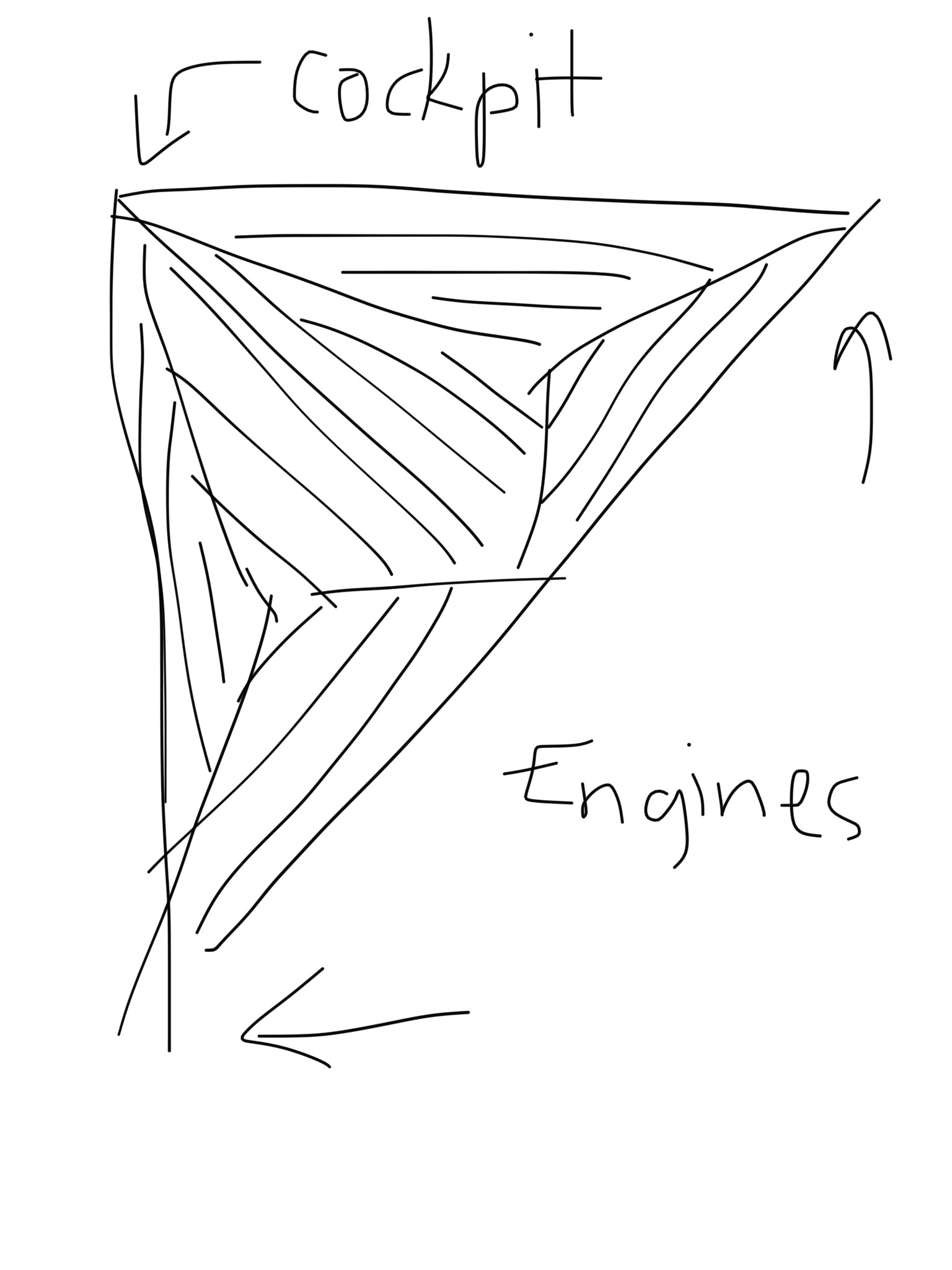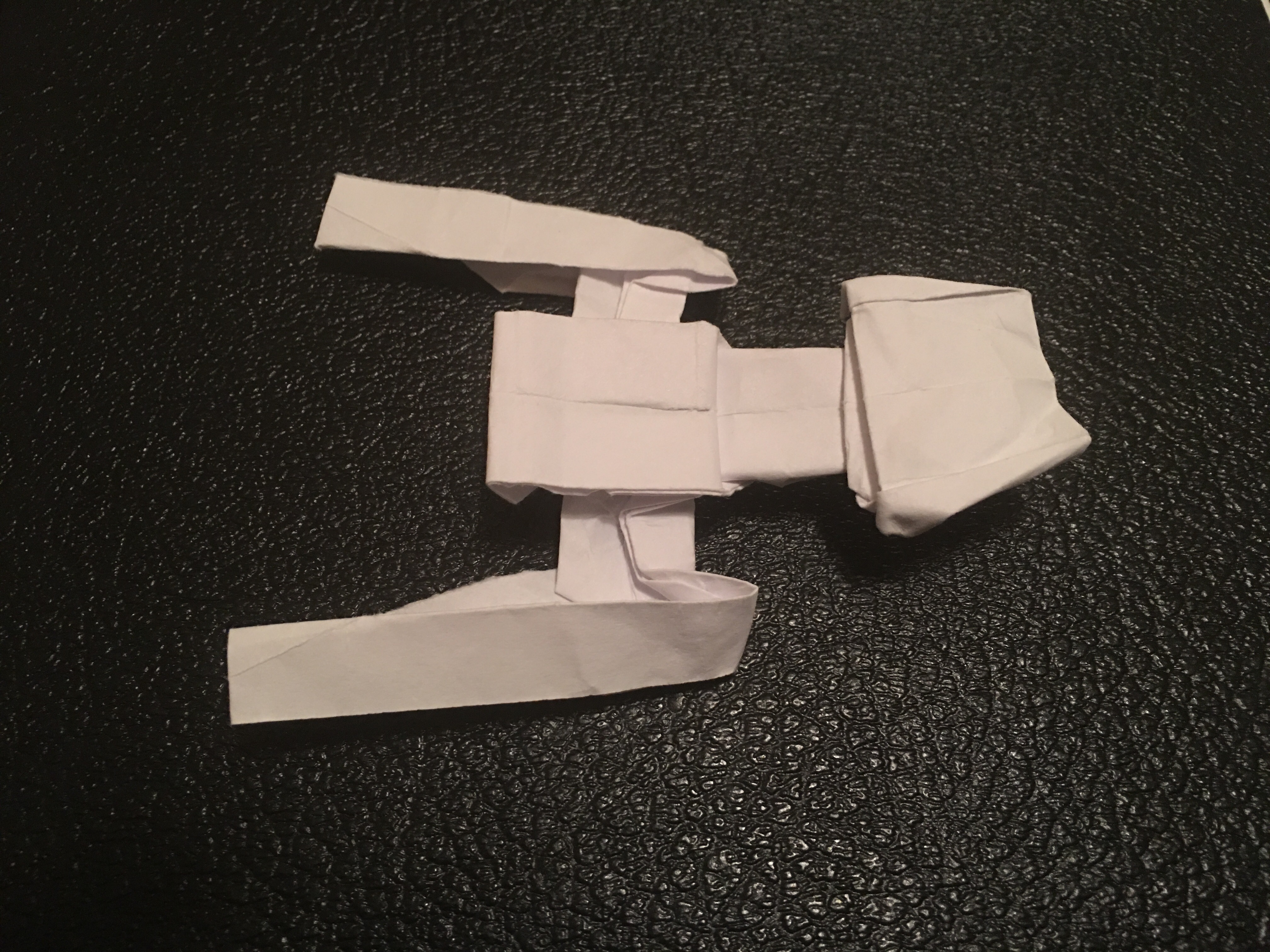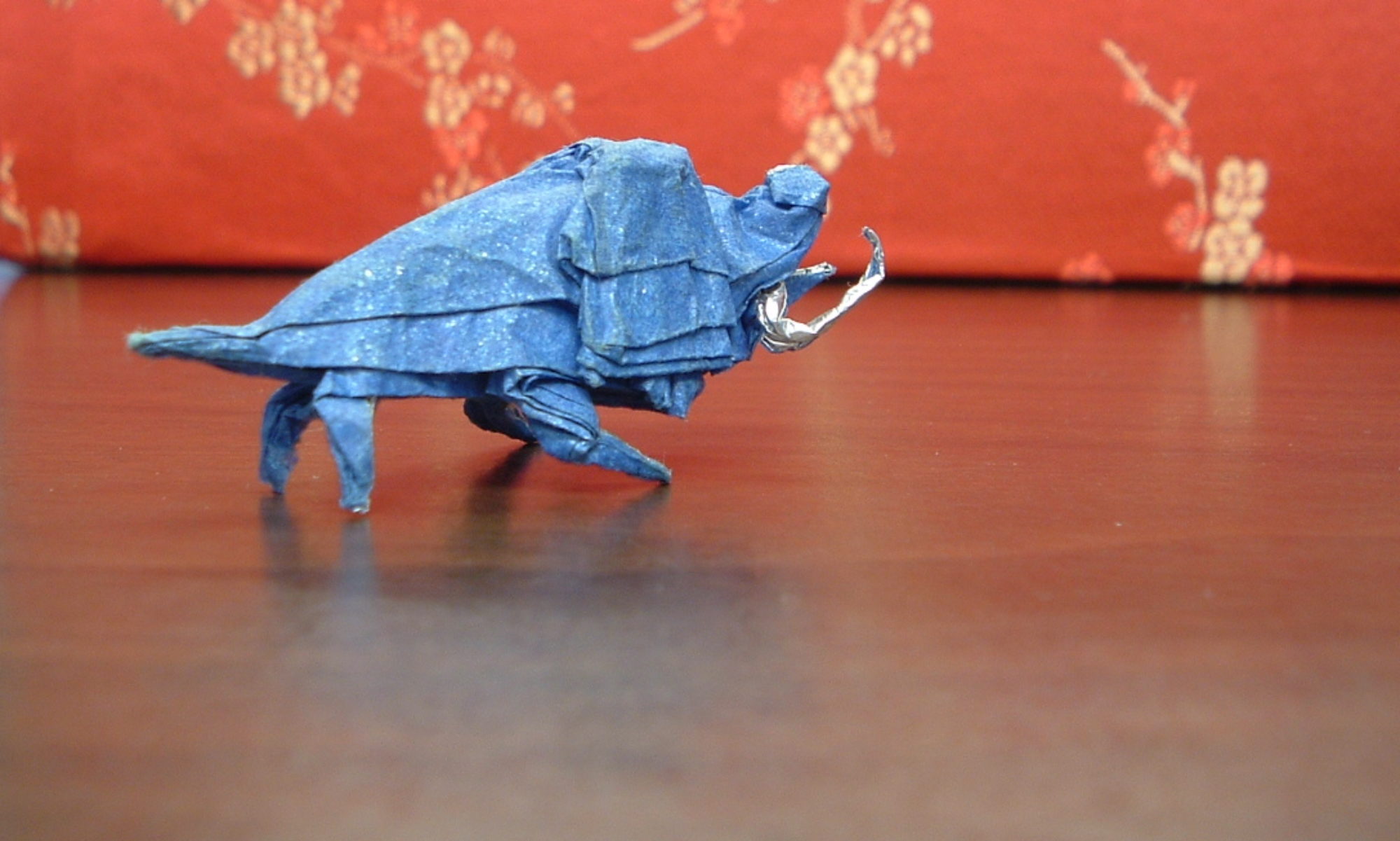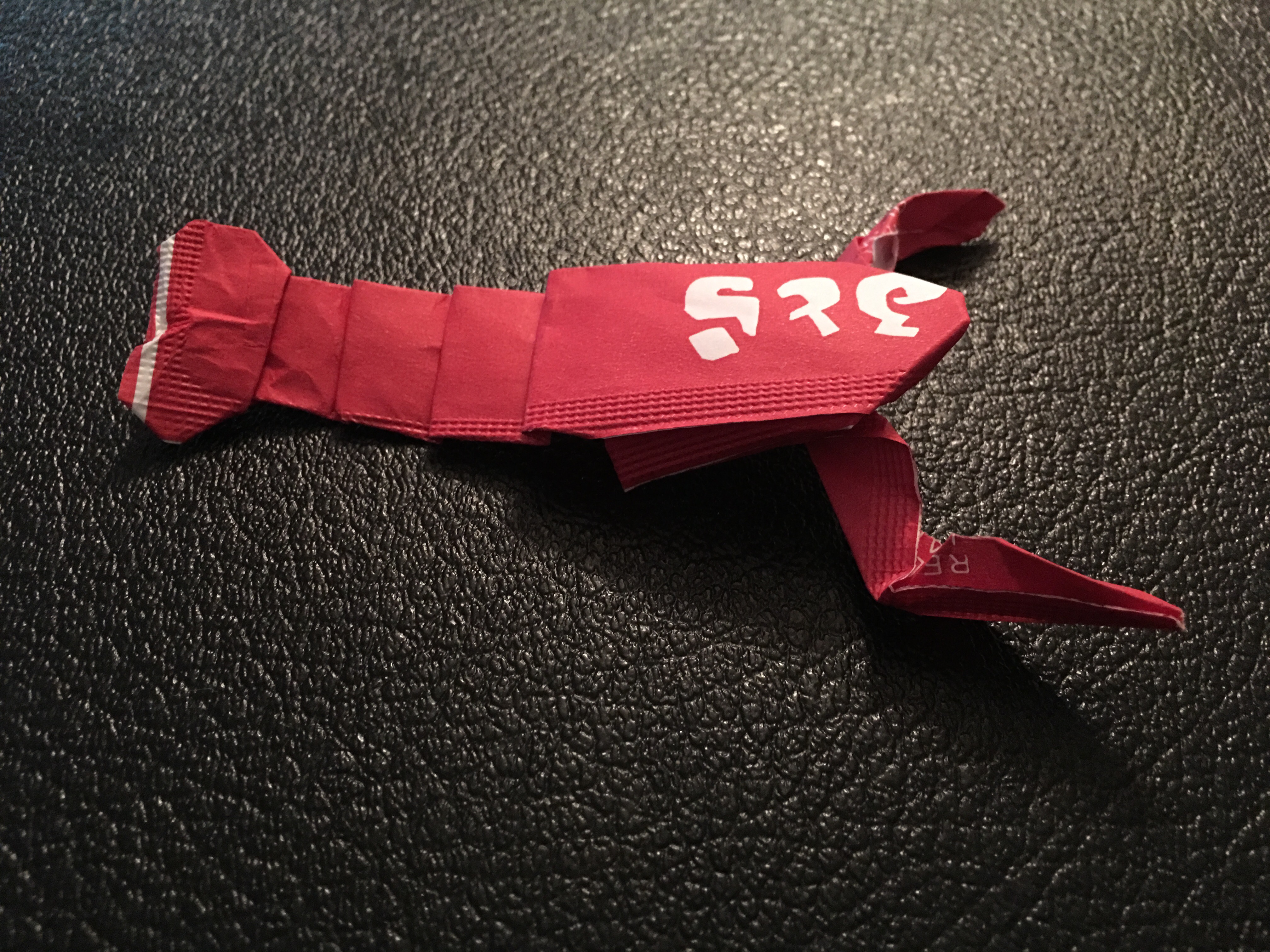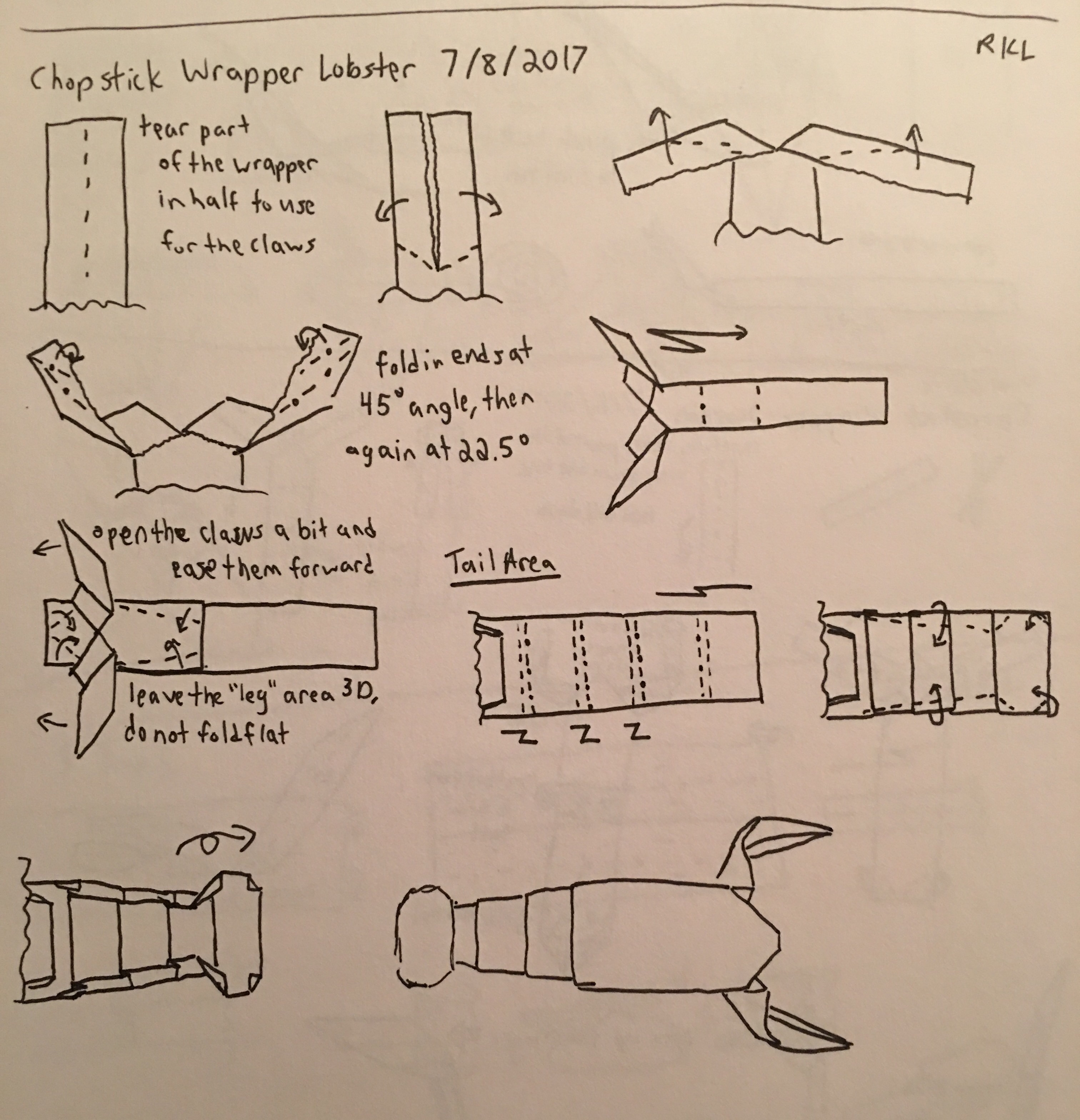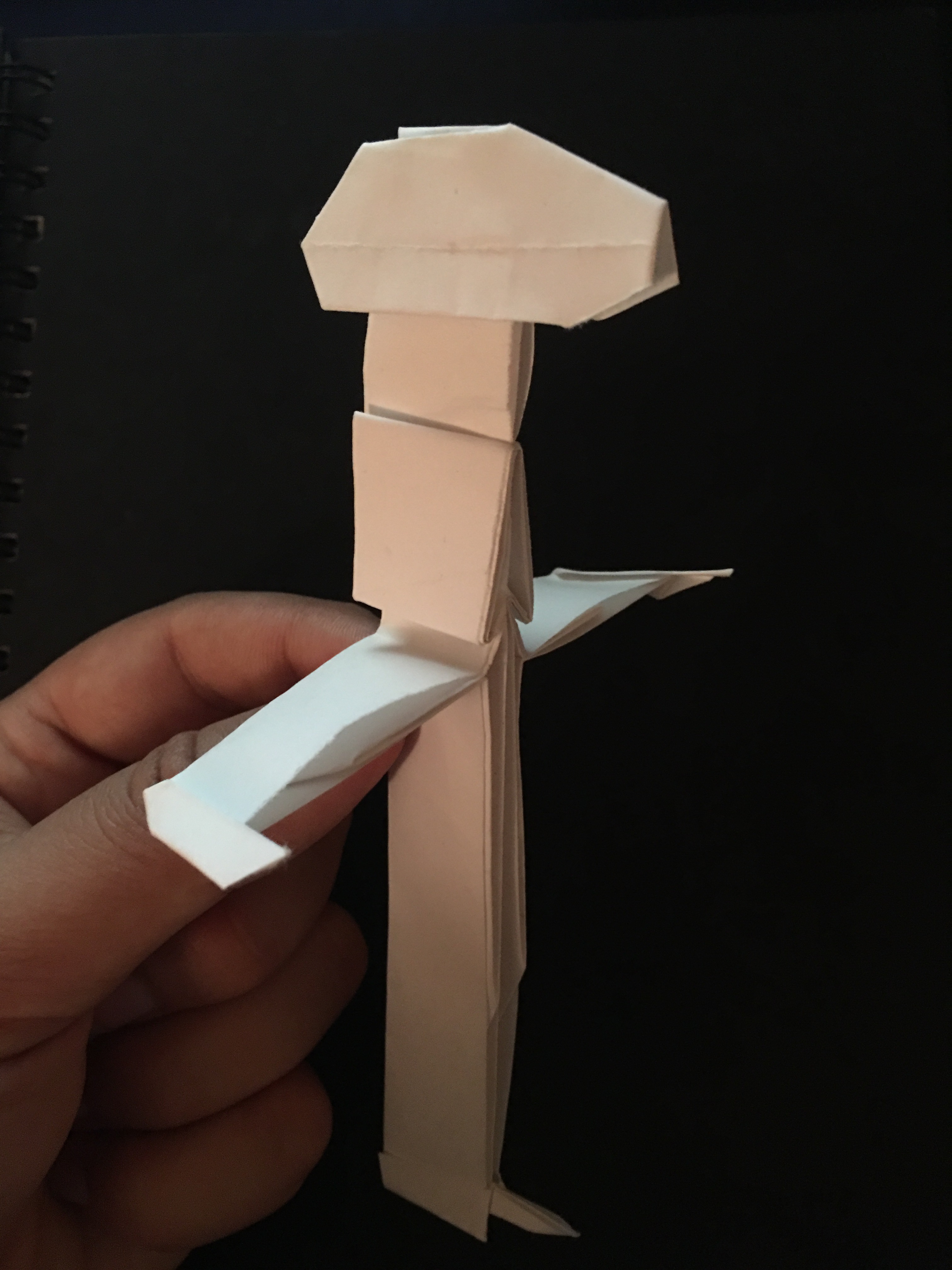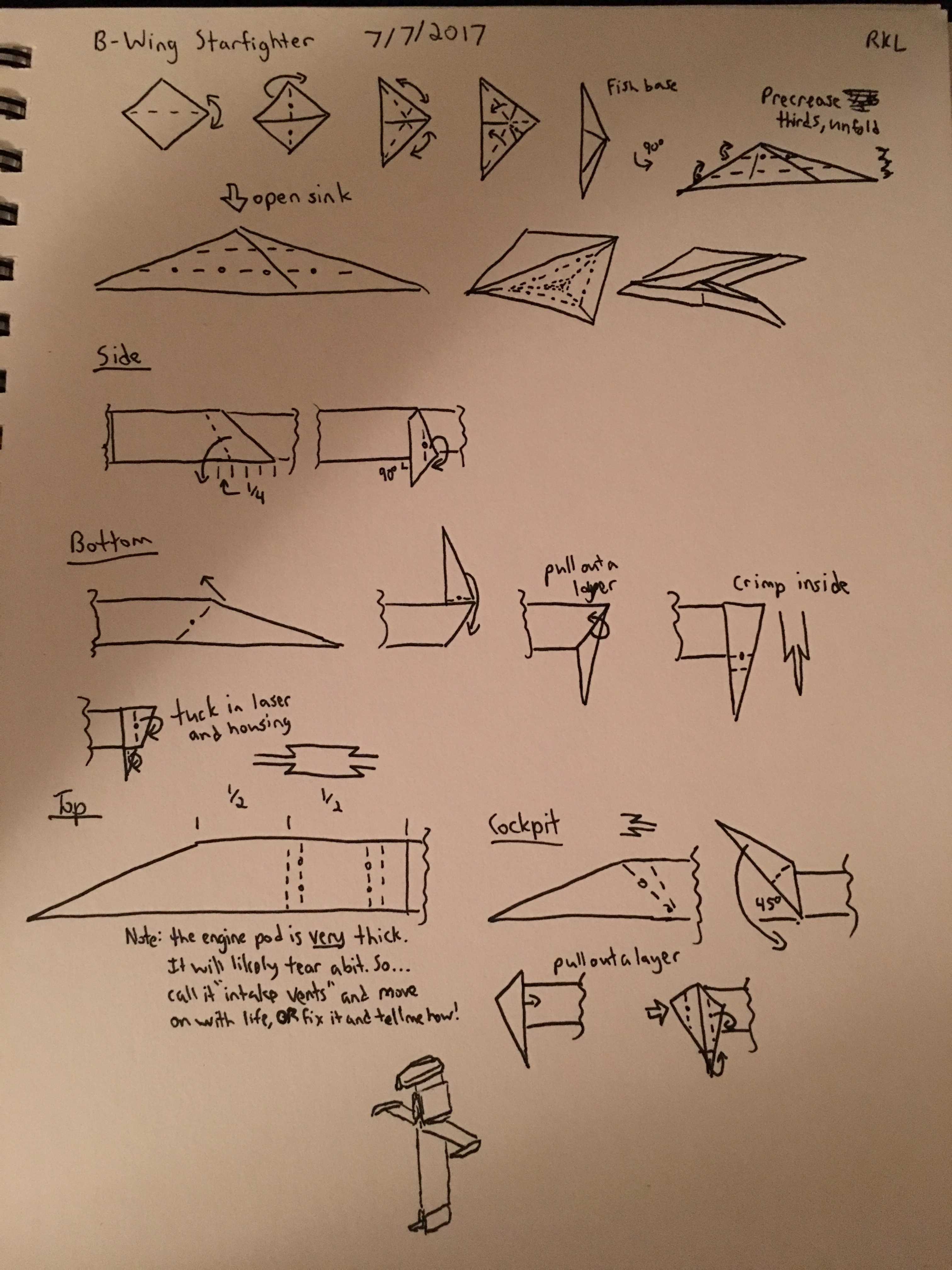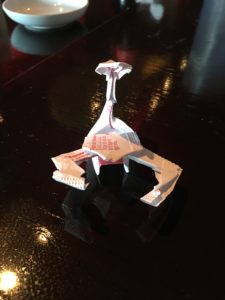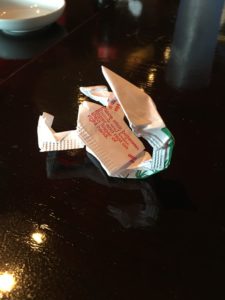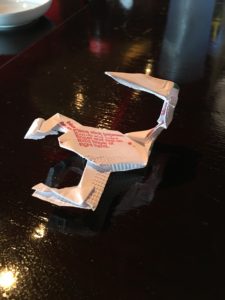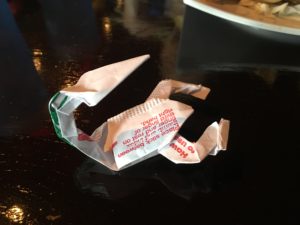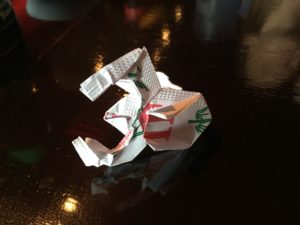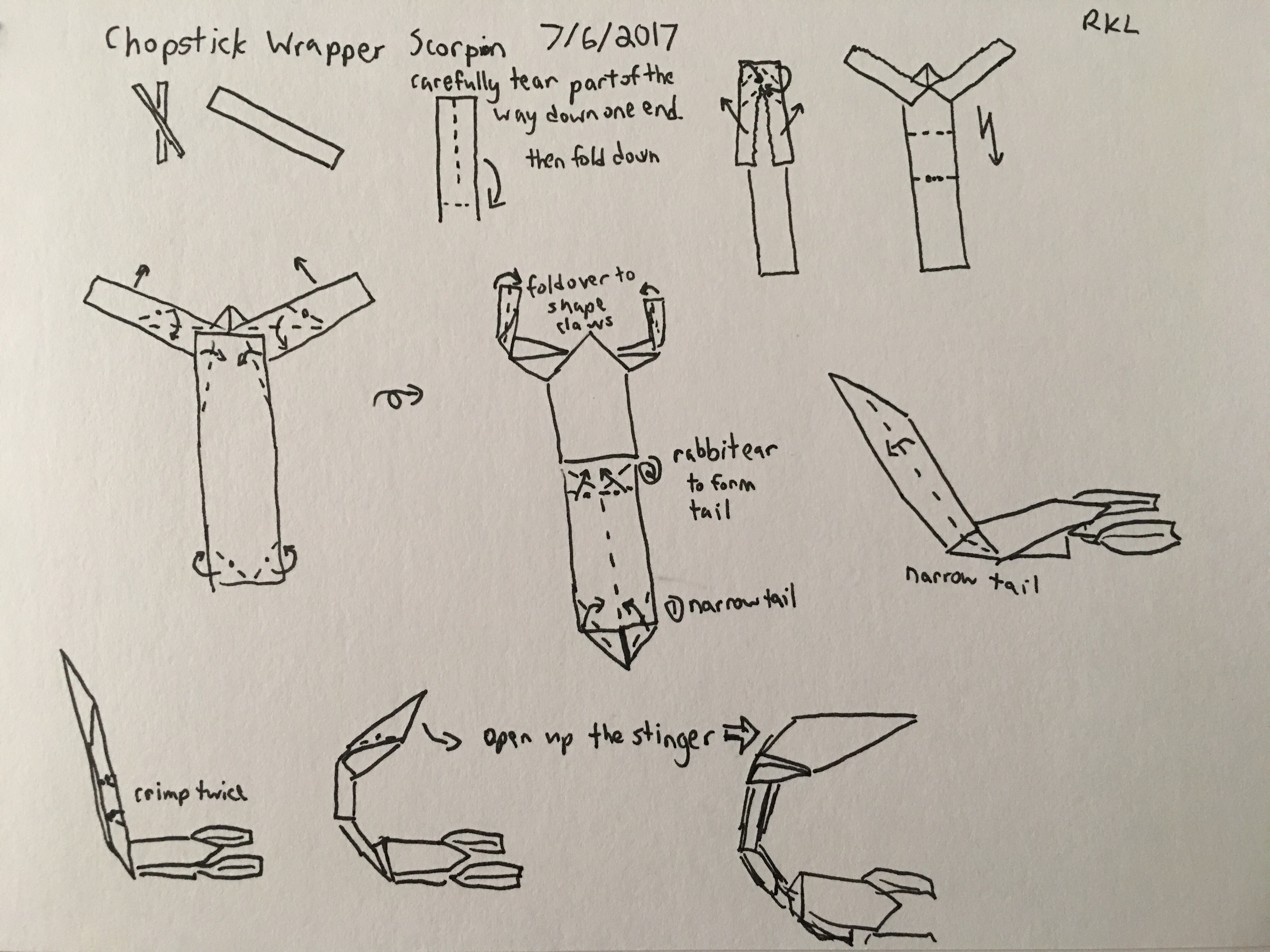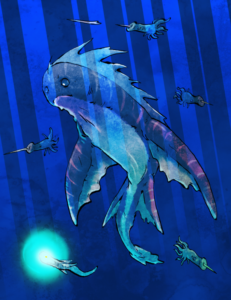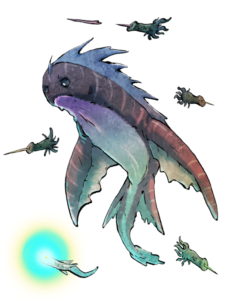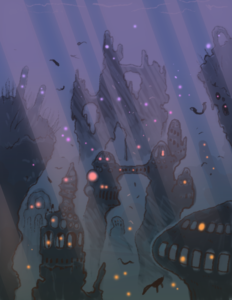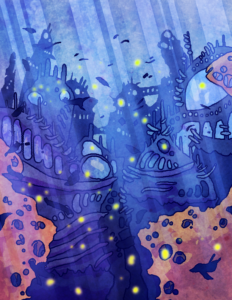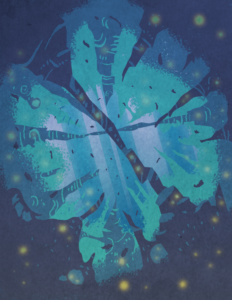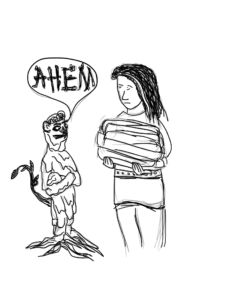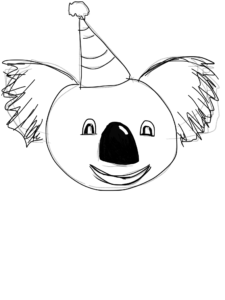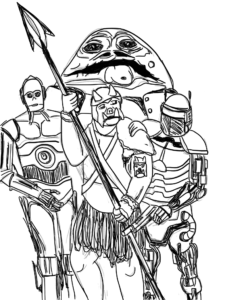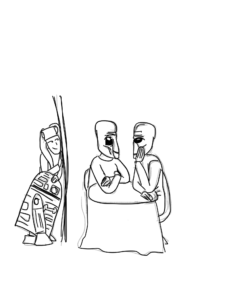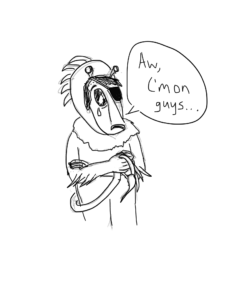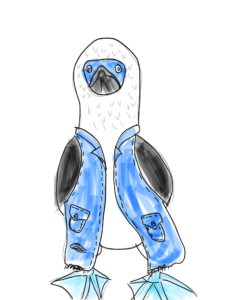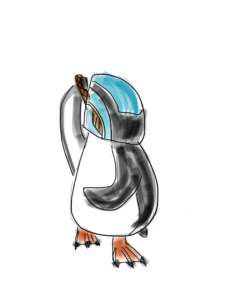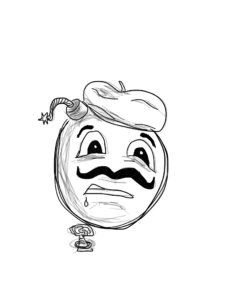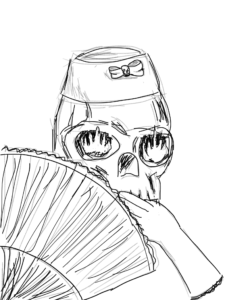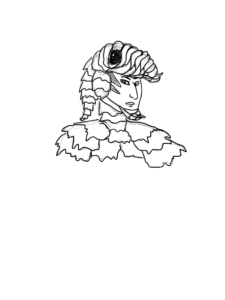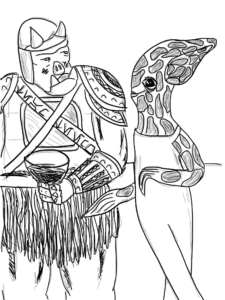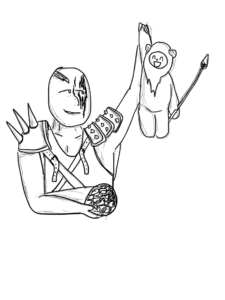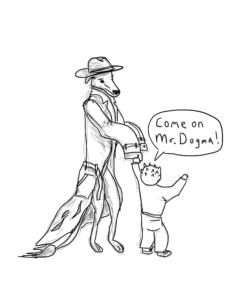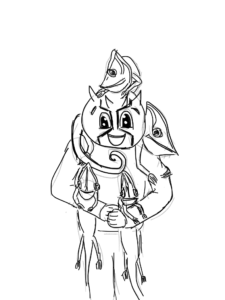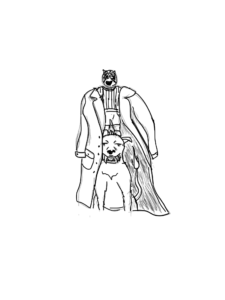Inspired by this year’s Game Chef challenge, I started work on an RPG that would incorporate the themes of Boundaries with the “ingredients” of Yarn, Echo, Smoke, and Cut. While I didn’t end up using all of them, it got the wheels turning.
Pulling Together
A crafty role-playing game about a tight-knit bomber crew trying to defect.
What you need to play:
- Size 7-8 knitting needles (4.5 mm – 5.0 mm)
- 8 ft (2.5 m) of medium weight yarn in a different color for each player
- One 10-sided die
- Scissors (preferably one for each player)
The story:
You and the other players are the crew of a bomber. You’ve been flying missions over the border through hails of antiaircraft fire and over the smoking ruins of no man’s land every night for months. This afternoon you said goodbye to your loved ones, wearing the sweaters they made you to keep you warm high in the sky. You kissed them goodbye for the last time. You and your crewmates know something. Something terrible. And you have decided the only thing left to do… is defect.
The game starts as you take off from the landing field, on a course to enemy territory, a place from which you’ll never return.
How to Play:
Each player selects a color of yarn. You’ll be knitting yourself a swatch of fabric to represent the Sweater your character was given by their loved one. While you knit, answer the following questions:
- What is your character’s job on the plane?
- What finally convinced them to go along with the plan to defect?
- Who are they leaving behind?
- What’s one danger they’re afraid they’ll face on the way? (Work as a group to come up with several challenges)
To knit your Sweater, cast on 8 stitches, then work 13 rows in a stockinette stitch (alternate rows of knitting and purling). Do not cast off. Once you have completed the last row, slide the needle out, then cut off the working yarn one inch from the last stitch. Whenever you unravel, do it using this strand (not the original tail).
This is a cooperative game with no lead storyteller. Together, draw on the challenges you discussed while you talked about your characters. Use these as the baseline for the tense situations you find yourself in as you attempt to cross the border. If you are having trouble coming up with ideas, try some of the following:
- The personnel in the flight tower as you take off are suspicious of you
- Nasty weather that threatens to throw you off course or damage the plane
- Friendly fighters get sent to chase you down
- A non-player character member of the crew has a breakdown and tries to sabotage the plane so you have to turn back
- You stray into range of an anti-aircraft battery/search lights
- Enemy fighters on patrol spot you and move to attack
- You must convince the enemy you’re there to defect
- A mechanical problem forces you to shut off one or more engines
- Ice freezes up some of the controls
- One character tells the others about the plans they had back home
- The landing zone isn’t big enough for the bomber
- One of the crew suffers a nasty injury
Getting past no man’s land and across the border won’t be easy. When you face challenging situations, your character must make a roll to determine if they succeed. Success is measured on a scale of 1 to 19. You’ll be rolling the ten-sided die to get a result, but before you do, you can unravel stitches of your sweater to give yourself a bonus to the roll of 1 per stitch unraveled.
- 1-9: You failed. The lower the number, the worse the consequence of your failure. A 9 on a roll to navigate might mean you’re only a few miles off course. A 1 on a roll to avoid searchlights might put you right in the center of a spotlight, conveniently near an anti-aircraft installation.
- 10-19: You succeeded. The higher the number, the better the result. A 10 on a roll to convince the air control tower that you’re on the schedule might mean they let you take off, but they’re still going to call the flight officer to check it after you’re off the ground. A 19 on a roll to watch for enemy fighters might let you notice the enemy flight coming from above out of the sun in time to line up all your gun turrets and get an unexpected first shot at them.
After you’ve made your roll, talk amongst yourselves as a group about what consequences or benefits make sense. Try to come up with an answer that works for everyone, but if you can’t agree, the person who made the roll has the final decision.
The narrative consequences of a failure will come naturally, but they also have consequences for the players. Since the whole crew is working together on this journey, they succeed together and they fail together. We represent this cut the cutting and tying of yarn.
Specifically, any time a roll is failed (a result of 1-9), everyone unravels any stitches as needed to ensure they have four inches (10 cm) of yarn between their last whole stitch and either the end of the yarn (at the beginning of the game) or the last knot in the yarn. Then, they cut their yarn two inches (5 cm) from the last whole stitch and pass it to the player on their right. Everyone then ties the yarn they were passed to the end they just cut.
The successes and failures should guide you through a challenge to new difficulties, but once you’ve resolved a scene, if there isn’t an immediately obvious new challenge that arises from it, go back to the list you talked about and decide what dramatic thing happens. Try to make sure everyone gets to contribute in meaningful ways, so make sure to include challenges that will require everyone’s input over the course of the game.
Also keep the pacing in mind. Ideally people should be running low on stitches to spend as you approach the end of your story.
- If you find yourself with too many left over, throw in a tense, spicy combat with enemy fighters and make those checks to convince them you’re there to defect, pilot your way out of their sights, and fire warning shots across their noses to keep them at bay.
- If you’re really running low and don’t know if you’ll have quite enough to get over the finish line, consider allowing anyone who has run out of stitches to roll the dice with an adjusted scale of 1-10, with 6 being a success to ensure they get to stay in the game while you play.
- If you’ve still got a ton of story to tell and you’re having fun, consider the following: Anyone who runs out of stitches goes into recuperation. While their character is recuperating from the stress of the mission, they can still make rolls, but they’re relying on the team to get them through. Other team members can supply the stitches to add to their roll (still with a max of +9). They represent recuperation by reknitting their Sweater with their patchwork yarn. Once they’ve reknitted the Sweater, they are done recuperating and can spend their stitches as normal. This player no longer cuts their yarn on failures, but once they run out of stitches again, that’s it. They’re done (unless you’re having such a great time you want to keep the story going, in which case, by all means allow recuperation multiple times). If your whole team is running low at the same time and multiple people are going to be recuperating, this might be a great time for a restroom break to let everybody knit back up to full strength.
Ending the Story:
The story ends when the plane lands (hopefully) safely on the other side of the border. At this point, everyone unravels any portion of their Sweater they have remaining. It’s over, for now. Take a look around at the yarn everyone has in front of them. It’s a map of the successes and failures it took to get your characters through to this point.
Finally, take your colorful patchwork yarn and reknit the Sweater. This will be your record of the game and the story you created together. Ask the following questions:
Use this time to discuss who and what you left behind, what sacrifices you made on the journey, how you came together, your fears and hopes about what this new place will be like, and the makeup of your new sweaters.
- What will your character miss the most?
- What are they most looking forward to?
- How has their relationship changed with the other members of the crew?
- Was it really worth it?
